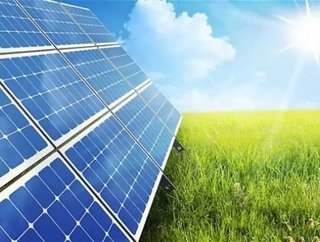Hydrogen Storage Solution for an Intermittent Energy Source: Solar

Click here to view this article in June's issue of Energy Digital
Written by Nick Ni and Xu Liu of Verde LLC
Today, energy is either transmitted directly to the consumer through the grid or stored as backup power for future use via batteries, pumping water, etc. When it comes to solar and wind energy, it becomes extraordinarily difficult to take full advantage of the renewable sources using traditional methods of power transmission due to the varied locations of consumers and their pace of consumption.
Why solar farms need storage
Simply put, “We need storage because the sun doesn’t shine at night,” Dr. David Wogan wrote in the Scientific American.
Rapidly advancing technologies like energy storage are required to compensate for the short-term volatility of renewable energy sources. When integrating solar, for instance, power plant owners and grid operators face three major challenges:
-
Uncontrollable variability: Solar output varies in ways that generation operators cannot control, because sunlight may vary from moment to moment, affecting moment-to-moment power output. This fluctuation in power output results in the need for additional energy to balance supply and demand on the grid on an instantaneous basis, as well as ancillary services such as frequency regulation and voltage support.
-
Partial unpredictability: The availability of sunlight is partially unpredictable as solar PV systems require the presence of sunlight in order to operate.
-
Location dependence: Solar resources are based in specific locations and—unlike coal, gas, oil or uranium—can not be transported to a generation site that is grid-optimal. Generation must be co-located with the resource itself, and often these locations are far from the places where the power will ultimately be used. New transmission capacity is often required to connect solar resources to the rest of the grid.
Storing solar energy for later use can solve or mitigate the above inherent challenges it presents. We can overcome uncontrollable variability and unpredictability by storing excessive energy output from intense sunlight, and discharging stored energy to compensate for insufficient energy output when sunlight becomes weak. Storing solar energy also enables users to avoid waste of intensive sunlight due to the capacity limit of the grid, further promoting the overall utilization rate of solar farms.
Storing solar energy in hydrogen versus traditional storage solutions
The use of hydrogen storage offers solutions to the limitations of traditional storage systems:
-
Hydrogen storage solution costs much less than the battery storage solution, especially as the storage amount and time length continues to grow. The cost of hydrogen storage will approach the value of a storage tank during its life cycle, while the cost of batteries will continue to grow from inception.
-
Hydrogen storage life expectancy is much longer than a battery source, surviving up to 40 years without performance dampening, while battery performance fades quickly from repeated charging and discharging.
-
The hydrogen storage solution is available everywhere, whereas pumped storage and compressed air storage relies rigidly on geographic condition.
-
Existing tank trailers or natural gas pipelines can be used to transport the hydrogen in a flexible way, easily overcoming location dependency.
Additionally, generating hydrogen from solar electrolysis produces zero emissions of green house gasses, benefiting the environment and industries adopting “clean hydrogen” as feedstock by replacing traditional hydrogen suppliers who produce hydrogen from fossil fuels. This innovative approach ultimately makes the best use of clean, renewable energy sources.
While current electrolyzers in the industry are made to operate at a constant load and cannot follow a variable load, a system adapting variable load has to be established due to the intermittency of sunlight. According to Verde LLC, it’s not very difficult to establish a 2.5MW system adapting to a wide range of operating parameters. Given the fluctuating characteristics of solar panels, specialized electrolyzers would be an ideal fit.
The goal of hydrogen storage is to promote overall energy efficiency, which will also be the focus of hydrogen component manufacturers like Verde LLC, Ballard Power Systems and RIX Industries. To realize the highest overall efficiency of the storage system technically and economically, the concerns are on following aspects:
-
Redesigning the electrical inverter system according to specific condition of solar panel
-
Integrating the electrical inverter system, electrolyzer and hydrogen compressor & tank organically with improved overall efficiency
-
Designing a self-monitoring control system
The hydrogen storage solution enables solar farms to overcome inherent disadvantages of variability and unpredictability. Steadily operating solar farms, no matter utility or residential scale, can be realized by balancing how much solar energy turns into electricity, how much solar energy becomes hydrogen, and how much hydrogen converts back into electricity.
The US Department of Energy has released a number of reports, proving one simple but precious fact: hydrogen from renewable power like solar will dominate the feedstock market for many industries for decades to come. While our economy is slowly, but steadily, recovering, the solar energy industry is encouraged to take advantage of all the benefits that hydrogen technology presents to its ultimate success.






